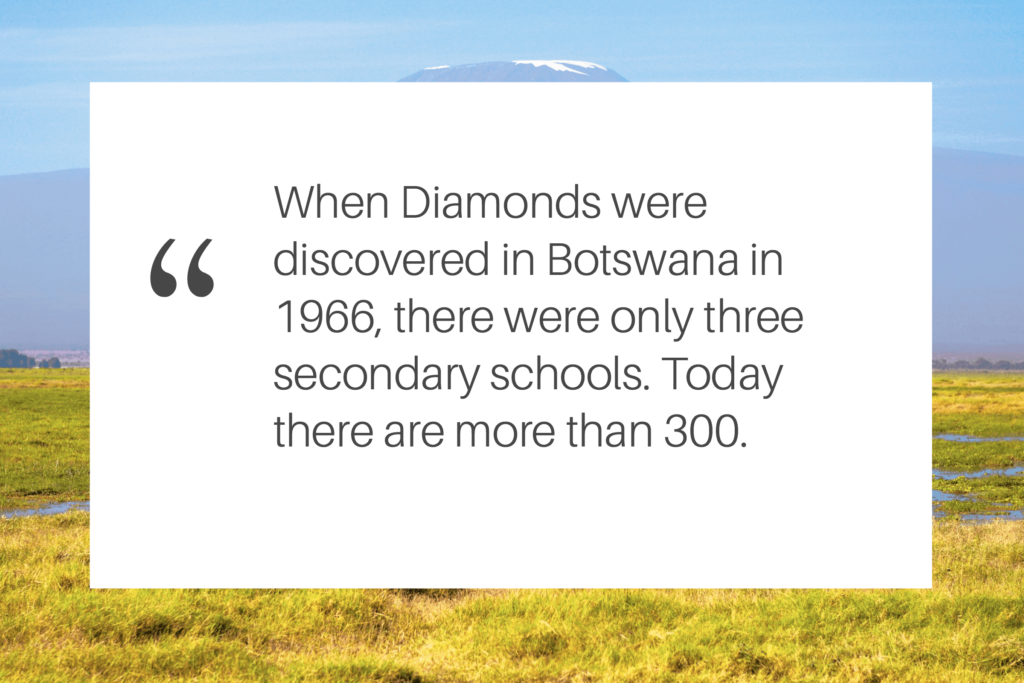Every Child in Botswana
What Really Matters
How is it possible that every child in Botswana receives free primary education? Festus Mogae, President of Botswana, said, “For our people, every diamond purchase represents food on the table; better living conditions, better healthcare, potable and safe drinking water, more roads to connect our remote communities; and much more.”
When diamonds were discovered in Botswana in 1966, there were only three secondary schools. Today there are more than 300.
Free education until the age of 13 lifts a massive burden off of the shoulders of so many parents. It has made Botswana an exception to the rule that African countries must charge for education due to insufficient tax revenues.

Even after 13, secondary education is 95% government funded, enabling children to stay in school and parents to sleep better. These new generations of educated kids will grow up to become the difference makers in Botswana.
It Takes a Village
25% of the labor force in Botswana is directly or indirectly linked to diamonds. Diamonds account for 33% of a GDP that has seen an average growth rate of 7% since 1966. Over the past 25 years, Botswana has consistently been one of the fastest growing economies in the world. The government and industry want to expand cutting and polishing training facilities to boost the economy further. This is only the beginning.
Source: Originally from the Botswana Ministry of Education, 2006
Read more about the Growing Impact on the local communities!
Read more about the Kalahari Dream Diamond


